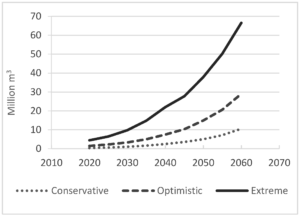
As we venture into 2024, the forest product markets are poised for significant transformations driven by emerging trends and evolving consumer demands. This article delves into the key trends shaping the industry, providing insights into how businesses and investors can navigate this dynamic landscape. From sustainable practices to technological advancements, understanding these trends will be crucial for staying competitive and meeting regulatory standards.
1. Sustainability at the Forefront
Sustainability has become a central theme in the forest product industry. Consumers and businesses alike are increasingly prioritizing eco-friendly products and practices. In 2024, this trend is expected to intensify as regulations tighten and environmental concerns escalate. Key aspects include:
- Certified Products: There is a growing demand for products certified by organizations like the Forest Stewardship Council (FSC) and the Programme for the Endorsement of Forest Certification (PEFC). These certifications assure consumers that the products come from responsibly managed forests.
- Circular Economy: Embracing a circular economy approach involves minimizing waste and maximizing the reuse of materials. Forest product companies are adopting practices such as recycling wood waste and using sustainable materials to reduce their environmental footprint.
- Carbon Footprint Reduction: Companies are investing in technologies and practices that reduce carbon emissions. This includes optimizing production processes and exploring alternative energy sources.
2. Technological Innovations
Technological advancements are revolutionizing the forest product industry, offering new opportunities for efficiency and growth. Some notable innovations include:
- Smart Forest Management: Technologies like satellite imaging, drones, and IoT sensors are enhancing forest management practices. These tools provide real-time data on forest health, growth rates, and pest infestations, enabling more informed decision-making.
- Advanced Wood Processing: Innovations in wood processing technologies, such as computer numerical control (CNC) machines and robotic systems, are improving precision and efficiency. This results in higher-quality products and reduced waste.
- Biotechnology: The use of biotechnology in forest products is expanding, with applications ranging from genetically modified trees to bio-based materials. These technologies aim to improve growth rates, disease resistance, and material properties.
3. Market Demand Shifts
Consumer preferences and market demands are evolving, influencing the forest product industry in several ways:
- Green Building Materials: There is an increasing preference for sustainable building materials in construction. Products such as cross-laminated timber (CLT) and engineered wood products are gaining popularity for their environmental benefits and structural performance.
- Biomaterials and Biofuels: The demand for biomaterials and biofuels is rising as industries seek to reduce reliance on fossil fuels. Forest products are being used to produce biofuels, bioplastics, and other sustainable alternatives.
- Customized Products: Consumers are seeking more personalized and customized products. The ability to tailor wood products to specific needs and preferences is becoming a competitive advantage.
4. Regulatory and Policy Changes
Regulations and policies play a crucial role in shaping the forest product market. In 2024, several regulatory trends are expected to impact the industry:
- Stricter Environmental Regulations: Governments are implementing stricter environmental regulations to address deforestation, habitat loss, and climate change. Companies must comply with these regulations to avoid penalties and maintain their market position.
- Incentives for Sustainable Practices: There are growing incentives for companies that adopt sustainable practices. This includes tax breaks, subsidies, and grants for investing in green technologies and sustainable sourcing.
- International Trade Agreements: Trade agreements and tariffs can influence the forest product market by affecting the flow of goods and materials across borders. Companies need to stay informed about changes in trade policies to navigate potential challenges.
5. Challenges and Opportunities
The forest product industry faces several challenges and opportunities as it moves into 2024:
- Supply Chain Disruptions: Global supply chain disruptions can impact the availability and cost of forest products. Companies must develop strategies to manage risks and ensure a stable supply chain.
- Innovation and Adaptation: Embracing innovation and adapting to changing market conditions can provide a competitive edge. Companies that invest in research and development, and adapt to new trends, will be better positioned for success.
- Consumer Education: Educating consumers about the benefits of sustainable forest products and the importance of responsible sourcing can drive demand and support industry growth.
Conclusion
Navigating the forest product markets in 2024 requires a keen understanding of emerging trends, technological advancements, and regulatory changes. By prioritizing sustainability, embracing innovation, and adapting to shifting consumer demands, companies can position themselves for success in this evolving industry. Staying informed and proactive will be key to capitalizing on opportunities and overcoming challenges in the year ahead.


